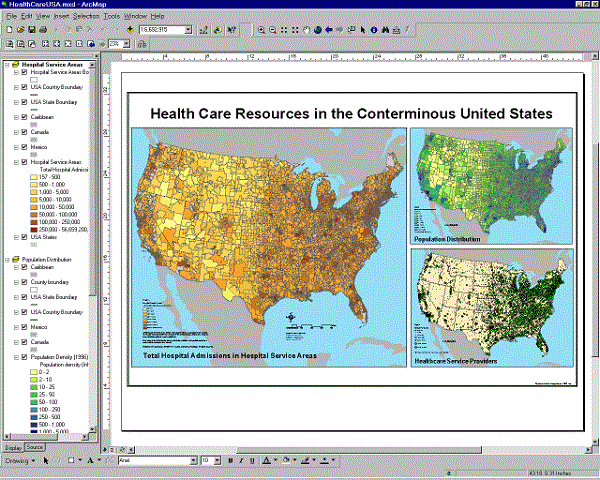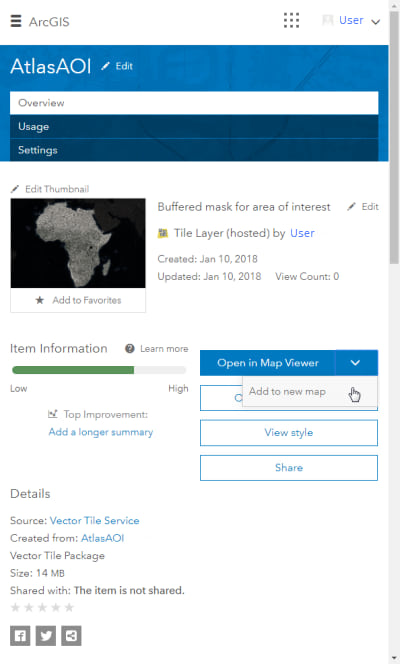

For example, instead of creating a single web feature layer with two sublayers, you may want to create two separate web feature layers. You can split and combine layers to get more control over the web content that is created. The raster layers in your map are grouped as sublayers in a single tile layer. If you select a configuration that copies data to the server, the feature layers in your map are grouped as sublayers in a single web feature layer.
By default, Add to Current Map will always extract the package into your user profile under: C:\Users\\Documents\ArcGIS\Packages. 
Alternatively, you can use the Extract Package tool and specify an output folder.

If you choose the Reference registered data: Editable configuration, a web feature layer containing the feature layers is created in addition to the map image layer. lpkx ), navigate to the folder containing it from the Catalog window, right click and click Add to Current Map. If you select a web map configuration that references registered data, the feature and raster layers in your map are grouped as sublayers in a single map image layer.
When you finish configuring a layer, click the Back button at the top of the pane. For example, editing is typically a configurable property of a web feature layer however, it is not available if you select the Copy all data: Exploratory configuration. Right-click each Prepare message to get more information, read help for the error, and click suggested fixes.The configurable properties of a web layer may be constrained by the configuration you select on the Map tab. If any issues are discovered, a Prepare window will appear with a list of the errors and warnings. When you run Analyze, it will validate your layer for any errors or warnings. You must Analyze your layer before you can save it to disk or share it at ArcGIS Online. The following types of files are not allowed to be included in the package. This option allows you to include other content, such as detailed documentation, reports, graphs, and so on. Specify Additional Files you want to include in the layer package. Under Item Description, provide a Summary and Tags for your layer package. You can choose to include data from an enterprise (ArcSDE) geodatabase ( Include Enterprise Geodatabase data instead of referencing the data). Specify where to save your layer package and give it a name-either as a file on disk or in your ArcGIS Online account for sharing. You can share multiple layers in your map by selecting several layers and clicking Create Layer Package. You can then load your own datasets for the layers in that geodatabase. When you unpack a schema-only layer package you will be prompted to create a new geodatabase or pick an existing one, and the data model for the layers will be loaded into that geodatabase. Then you could create a new webmap and pass in the previous webmap. This type of package allows you to share your layer design and the corresponding data model design without sharing your data. Youll need have a webmap with your layers ready to be used (or create it using Python API). Layer packages support multiple versions of ArcGIS therefore,Ĭonsider the layers and data sources you are choosing to package toĮnsure they are available in previous versions of the software.Īdditionally, a layer can be saved as a schema-only layer package. You will receive a warning for content that will not be available in previous versions of ArcGIS when packaging your layer. Packaging unsupported layers and datasets for previous versions will result in those items not opening when used by previous versions of the software. 
While a layer package will be larger in size than a layer file (because it includes the data), your users will not need to worry about access to your same data sources. When using ArcGlobe or ArcScene, 3D properties can be added to a map layer and included in a layer package. Layer packages can be created in ArcMap, ArcGlobe, and ArcScene and can be shared between these applications, including ArcGIS Explorer.
#CREATE A WEBMAP USING LAYER PACKAGE IN ARCGIS HOW TO#
Other users will be able to add layer packages directly into their maps without having to know how to access the database or classify the data. With a layer package, you can save and share everything about the layer-its symbolization, labeling, field properties, and the data. A layer package includes both the layer properties and the dataset referenced by the layer. A layer can be saved with its data as a layer package (.lpk).








 0 kommentar(er)
0 kommentar(er)
